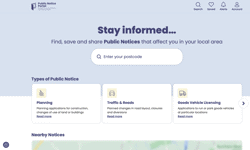It’s a fact of life that most people underestimate what they consume – which is why diet plans often advise keeping a ‘food diary’. The act of listing everything that passes your lips is intended to shock you into a more considered approach towards stuffing your face.
It’s the same story with our content consumption habits.
If asked what content you consume on a daily basis, you might think of a newspaper, a couple of blogs or news websites, perhaps a glance at Facebook and Twitter or the company intranet, maybe some radio or TV.
So, in the spirit of New Year resolutions, try keeping a content diary for a day. Make a note of every piece of information you consume, how you access it, and the time you spend engaging with it. Leave nothing out. Include all channels – social media, emails, websites, print, radio, TV, SMS, mobile apps – and all types of content – news, comment, data, user-generated and ‘published’, video, audio and written word.
I guarantee you will be surprised by two things: how much content you consume, and how little of your time each content source typically accounts for.
As a publisher of content, it is easy to fall into the trap of seeing your audience solely through the prism of your own products. It’s salutary to remind ourselves how small a share of their attention we actually enjoy.
So, given the paucity of your audience’s attention span, how do you make sure your content strategy delivers enough of their time in order to be able to monetise it – either directly by charging them for the content you are providing, or indirectly by serving them with advertising messages?
It may be helpful first to define what we mean by the much over-used term ‘content’.
Most media firms have their heritage in journalism – news and features, written and produced by professional journalists. But if you try the content diary exercise, you will quickly realise that this is only a part of the average diet.
If we take the broadest definition of content as ‘information’, then we must also include social and user-generated content, brand messages, ‘curated’ or shared content, archive and reference sources, search and data.
We can however put all of this into some broad categories:
* Latest information: including news, job ads, bulletins, social, blogs, reviews and feedback, tweets. This is fast, time-sensitive information. It’s less edited, quick to consume, short-lived / frequently updated, attracts instant response, and often generates significant traffic spikes as items ‘trend’.
While the speed with which news can be gathered and transmitted has increased, faster delivery has tended to compress the time available for journalistic analysis and checking. This has led to the ‘commoditisation’ of news, where the brand of the provider is less important and the recipient typically places a low value on the information – making it harder to monetise as paid-for content. This is compounded by the widespread availability of information, rumour and gossip from non-journalistic sources. Nevertheless, this kind of content remains among the strongest drivers of traffic.
Meanwhile, user-generated content (both on publishers’ own sites and on social networks) plays an increasingly important part in building a robust community by encouraging interaction, and longer / repeat visits. It also drives traffic through users passing on links and recommendations via their networks.
* Depth and colour: including features, analysis, investigations, specials, visuals / infographics, expert comment, columns and blogs. This kind of content tends to be eye-catching, selective, crafted, high-profile, unique and original.
This is where professional journalists (and the best bloggers) can add real value through their expert sifting, analysis and interpretation of the facts; the placing in context of a story; and the considered view.
* Tools and resources: including archives, data, rankings, product reviews, buyers’ guides, directories, research and data, market reports, mobile apps and web widgets, compliance and training resources. This kind of information is characterised by being data-rich, comprehensive, practical / essential, and capable of being interrogated by users.
Information services of this kind can command high values. Some require the creation of original research material and data. Others utilise data provided by third parties, some of which is free to access and in the public domain. Here the value is created in the presentation and organisation of content, as well as in the addition of expert comment and interpretation. Comprehensiveness and accuracy are vital components of these products. Purchasers must be able to have great confidence in the information provided.
Finding the value
It seems straightforward to spot the potential value in each of these categories of content – broadly speaking, news is cheap, and data-rich information services are expensive. But it’s important to note that value is in the eye of the beholder. To certain business audiences, accurate and timely news might be immensely valuable as a way of finding out about contracts up for grabs, for example.
Ultimately, your ability to charge for your content depends more on the key factors of trust, relevance, quality, and scarcity. How good is your content? Is it ‘nice to have’ or ‘must have’? Can people get similar content cheaper or free elsewhere?
If you have researched your audience’s information habits in depth, you should have a good feel for what content is important to them, and what they would value. But as your content evolves, it’s crucial to take a step back and evaluate what your brand stands for. Are you still primarily a news service, or has your mission changed? What is the overarching ‘brand promise’ to your audience? And above all, what value are you providing to them through your content?
Having established your value proposition, how do you then get your audience to pay for your content without decimating the community you have carefully nurtured? Ask your ad sales director whether he or she would like to shut out a high proportion of their audience overnight and you will probably get quite a focused reply.
The debate about paid content has tended to revolve around whether or not to erect a so-called ‘paywall’ around your content – in an all or nothing fashion. This is a somewhat simplistic view. The real question is not so much whether to have a paywall but how much and which parts of your content should be behind it.
Each audience will vary in its needs, but it is perfectly possible to conceive a hybrid strategy which provides some free content (driving traffic) which is supported by ad revenue, and a range of paid-for services – including high value subscriber services, one-off purchases, and gated areas of sites.
This approach maximises the potential revenues by tailoring the revenue model to the audience need and willingness to pay for the particular type of content being provided, rather than forcing the majority of content behind a subscription wall at a single price point which may prove a barrier to further expansion of the community.
Curators or creators?
Another question to consider is how much of the content you actually need to generate yourself. And to what extent should you allow, or even encourage others to re-use your original content, without destroying the value you have created.
Do you need to own or originate content in order to monetise it? The answer is clearly no. At the most basic level, search engines and content aggregators monetise others’ content through advertising. But if you are seeking to generate paid content revenues, aggregation is not enough – you need to add value.
Value can be added in different ways – through adding original content of your own; by overlaying analysis or expert comment; or simply by organising the material more effectively. Finding new and useful ways of slicing, dicing or combining the information can even turn existing free or archive content into a revenue generator.
There may also be opportunities to create more formal partnerships with other organisations that may have repositories of potentially valuable content too – industry associations, clubs, think-tanks and public sector bodies.
Editors meanwhile need to take a more central role in planning and managing the relationship with the community they serve, as we move towards a more dynamic content environment in which audiences engage with and receive bespoke packages of information across a range of formats. As publishing brands evolve into multi-platform entities offering a wide range of content from a variety of sources, editors will need to become content champions, ringmasters, brand owners and curators.
What’s the difference between curating and editing? Curating is the knowledgeable sifting and organisation of existing content, while editing traditionally involves the commissioning, creating and refining of new content. Both editors and curators aim to act as the ‘trusted guide’ to help audiences find the best and most relevant information for their needs.
In the old days it was simpler. You created the content, controlled both the format and the means of distribution, and collected payment for it from your readers. Your advertisers paid handsomely to reach this loyal audience. And if anyone dared to re-publish your content without paying for it, you sued them.
Now others are using your content to woo advertisers and build their own businesses, even though you still bear the cost of creating it.
Content curation is not necessarily the enemy of paid content models, however. In fact it should help by promoting your content to a wider audience. Curators are selective (that’s the whole point) so they won’t be using all of your content. Their offering may therefore be wide and shallow, while yours is narrow and deep. Not all of their audience will follow the link to your site, but those that do find your content relevant should be more easily hooked.
The additional traffic that a curator drives to your site has a value to you. Each ‘curation’ can be seen as a recommendation, or third party endorsement of your content. These in turn should lead to increased click-throughs to your brand, which can be monetised.
You also need to become a curator of others’ content. Even if you already employ editors who are experts in their field, they do not have a monopoly on producing relevant content. Adding an element of curated content from other sources (including audience generated) will enhance the overall value of the service you are providing and boost engagement levels, when combined with the right social media strategy.
Effective content curation can also boost your ability to collect information about your audience and their content habits. Data about your audience is rapidly becoming the most valuable commodity you can possess. The more you know about your audience, the better you can refine and adapt your content, products and pricing to their needs – and the better your sales story to advertisers.
In these first two articles, I have argued that formulating a successful content strategy means putting your audience at the heart of your business model. First you need to gain a deeper understanding of their content needs and consumption habits – only then can your content champions set about producing the right mix of content to suit the audience’s needs.
The final piece of the jigsaw is delivery. How do you serve that content in the most appropriate format to maximise engagement and therefore value? Most publishers have already embraced multiple channels - from print to digital to live events. But how do you move from providing users with a collection of 'products' to a seamless, and potentially more valuable 'information service'?
In part 3, I will look at how to choose the right formats for your content and your audience, and how to monetise them.
Stephen’s ‘How to develop a winning content strategy’ series:
Part 1: Audience (Nov/Dec 2011)
Part 2: Content (Jan/Feb 2012)
Part 3: Format (Mar/Apr 2012)










